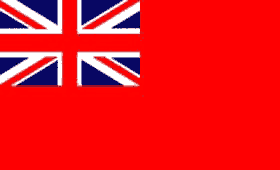Colonial Wars |
American Wars |
Link To This Page — Contact Us —
The Battle of Blue Licks
August 19, 1782 at Blue Licks, Kentucky
 |
||||||
|
The Battle of Blue Licks was the last major battle of the war. The battle, which took place in the frontier country of northern Kentucky occurred almost 10 months after the surrender of the British commander Gen. Lord Charles Cornwallis, following the Battle of Yorktown. It was a decisive victory for a combined invasion force of 1,000 British regulars and Native Americans from the Ohio nations over a force of 180 Kentucky militia, civilians trained as soldiers but not part of the regular army men. It is considered by historians to be the "low point" for the Americans in the struggle for possession of the western country beyond the Appalachian Mountains, a mountain range in the eastern United States extending from Quebec to the Gulf of Mexico.
Prior to the battle, a force of approximately 50 British regulars and Queen's Rangers, under Capt. William Caldwell, together with a force of Iroquois and Mingos, under Chief Joseph Bryant, had moved southward from Detroit to attack the American settlement at Wheeling on the Ohio River. At the same time, a congress of the Ohio nations at the principal Shawnee village of Chalahgawtha along the Little Miami River met on August 2. Simon Girty, one of the organizers of the congress, heard of the British and Iroquois invasion force and sent a messenger to intercept them, with the intention of creating a combined force to move against the Americans.
The plan was to forgo attacking the Americans at the fortified position in Wheeling but instead to attack in central Kentucky, where an invasion would not be suspected. The plan was specifically to deceptively attack the small American settlement at Bryants Station with a small decoy force of Native Americans. The Americans at the nearby larger settlement of Lexington would necessarily send out a relief party, the size of which could be judged. The fleeing Native Americans would then lure the Americans into an ambush by the larger British and Native American force, which numbered approximately 1,000 men.
The plan was enormously successful. The bulk of the British and Ohio nations force hid at Blue Licks, a salt lick on the Licking River, while a small party attacked Bryants Station, purposely allowing a few to escape to notify the Kentuckians at Lexington. A force of approximately 180 Kentuckians, under a group of various leaders in cooperation set out in relief. Daniel Boone, who led a force of 45 militia from Fayette County, as well as another major contingent from Lincoln County and under the leadership of Stephen Trigg who was assisted by Hugh McGary of Harrodsburg, who had lost his family in an attack by the Indians 5 years before the battle.
The Kentuckians arrived at Bryants Station to find the Native Americans gone. The Kentuckians advanced against the fleeing Native American decoy force, who purposely left an easy trail to follow, allowing the Kentuckians to catch to them at a bend on the Licking River where the rest of the British and Native American force lay concealed. Unaware of the larger force, the Kentuckians faced a decision of whether to immediately attack or wait for Col.Benjamin Logan, who was advancing a day behind them with a force of approximately 200 men.
Boone had grown increasingly suspicious of a trap from the obvious trail left by the fleeing Native Americans. At the officer's council, however, McGary was insulted at the implication of cowardice on his part and impulsively led a charge across the river. The ambush resulted in hand-to-hand combat. The contingent, including Daniel Boone, was ambushed in a ravine, and within a few minutes, the out-numbered Kentuckians were driven in panic back across the Licking River.
The Battle of Blue Licks was often called the last battle of the Revolutionary War because the Kentuckians engaged both the British soldiers and Indians
